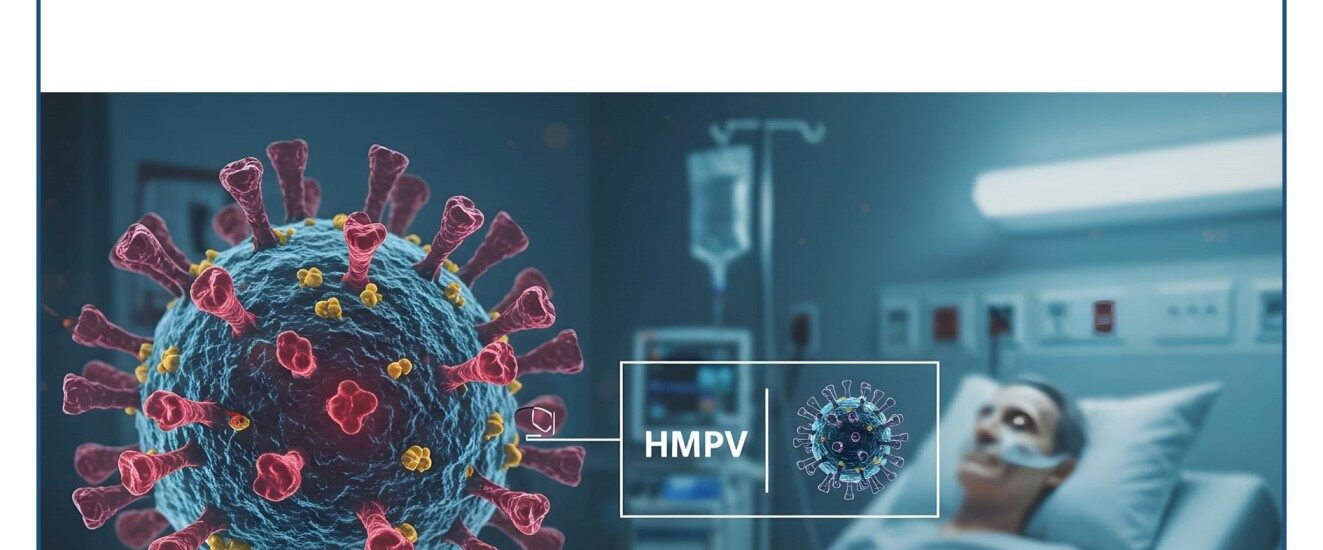Dr. Reeti Pathak, BHMS, MD (Med)
Human Metapneumovirus (HMPV) is a respiratory virus that can lead to a spectrum of illnesses, ranging from mild cold-like symptoms to severe respiratory infections. It poses a significant health risk, particularly to young children, older adults, and individuals with compromised immune systems. Understanding its transmission, prevention, and management is crucial for minimizing its impact.
Transmission of HMPV
HMPV spreads primarily through respiratory droplets. When an infected person coughs or sneezes, the virus can travel through the air, entering the respiratory system of a nearby person. Additional modes of transmission include:
- Close Personal Contact: Physical interactions such as hugging or shaking hands with an infected individual.
- Contaminated Surfaces: Touching objects or surfaces with the virus and subsequently touching the face, especially the eyes, nose, or mouth.
Preventing the Spread of HMPV
Preventive measures are essential to reduce the risk of contracting or transmitting HMPV. The Centers for Disease Control and Prevention (CDC) offers the following recommendations:
1. Hand Hygiene
Regular handwashing is one of the most effective ways to prevent the spread of HMPV and other respiratory viruses. Follow these steps for proper hand hygiene:
- Use soap and water.
- Wash hands for at least 20 seconds.
- If soap and water are unavailable, use an alcohol-based hand sanitizer.
2. Respiratory Etiquette
Adopting good respiratory hygiene can significantly reduce virus transmission.
- Cover your mouth and nose with a tissue when coughing or sneezing.
- Dispose of used tissues immediately.
- If no tissue is available, cough or sneeze into your elbow, not your hands.
3. Avoid Close Contact
Limiting interaction with infected individuals can curb the spread of HMPV:
- Maintain a safe distance from people exhibiting symptoms of respiratory illness.
- If you are sick, stay home and avoid close contact with others.
4. Surface Disinfection
Regular cleaning and disinfection of frequently touched objects and surfaces can eliminate the virus:
- Focus on items such as doorknobs, light switches, mobile phones, and countertops.
- Use appropriate disinfectants effective against respiratory viruses.
Infection Control in Healthcare Settings
In healthcare environments, where the risk of transmission is heightened, strict infection control measures are vital. The CDC recommends implementing the following precautions:
- Standard Precautions: These include basic infection prevention practices such as hand hygiene and the use of personal protective equipment (PPE).
- Contact Precautions: Healthcare workers should wear gloves and gowns when interacting with infected patients or handling contaminated materials.
- Droplet Precautions: Masks should be worn to prevent inhalation of virus-laden droplets.
- Patient Isolation: Infected individuals should be placed in isolation to prevent the spread of HMPV within healthcare facilities.
Diagnosis and Testing for HMPV
Identifying HMPV in patients presenting with acute respiratory illness is essential for appropriate management, especially during its peak activity in late winter and spring. Common diagnostic methods include:
- Nucleic Acid Amplification Tests (NAATs): These highly sensitive tests detect the genetic material of the virus in respiratory specimens.
- Antigen Detection Tests: These tests identify viral proteins in respiratory samples, providing rapid results.
Treatment and Management of HMPV
Currently, there is no specific antiviral treatment for HMPV. Management focuses on alleviating symptoms and supporting the patient’s recovery.
Supportive Care Measures:
- Hydration: Encourage fluid intake to prevent dehydration.
- Fever and Pain Relief: Use over-the-counter medications such as acetaminophen or ibuprofen to manage fever and body aches.
- Rest: Adequate rest helps the body recover from infection.
Most HMPV infections are self-limiting, with symptoms typically resolving within 2 to 5 days. In severe cases, especially in vulnerable populations, hospitalization may be necessary for oxygen therapy or other supportive interventions.
Conclusion
Human Metapneumovirus (HMPV) is a significant cause of respiratory illnesses, especially in high-risk groups. By understanding its transmission and adopting preventive measures such as hand hygiene, respiratory etiquette, and surface disinfection, individuals can protect themselves and others. In healthcare settings, stringent infection control protocols further mitigate the risk of nosocomial transmission. While there is no specific treatment for HMPV, supportive care ensures most individuals recover fully within a few days. Awareness and proactive measures remain the cornerstone of managing this common yet potentially serious respiratory virus.








